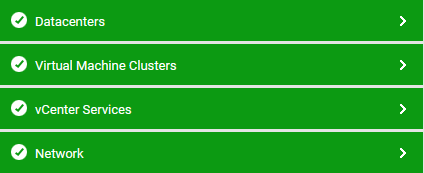Monitoring vCenter Clusters
Typically, when one/more vCenter servers in an environment are grouped to form a cluster, all requests to the vCenter servers in the cluster will be routed via a vCenter cluster server. If one vCenter server in the cluster is unavailable, then the cluster server will automatically direct the incoming request to any other available vCenter server in the cluster; this is why, all the vCenter servers in the cluster are required to manage the same set of vSphere/ESX servers. This way, the request does not go unserviced and the 100% availability of the target vCenter server is ensured.
However, if none of the vCenter servers in a cluster are available, then the cluster server will not be able to service any of the requests.
To enable administrators to determine whether the cluster is able to service requests or not, the eG Enterprise includes the VMware vCenter Cluster component.

Figure 1 : The VMware vCenter Cluster monitoring model
When the eG agent monitoring this component executes tests on it, the cluster server automatically connects to any available vCenter server in the cluster and pulls out the desired metrics. This is why the layer model of the cluster server is the same as that of a vCenter server.
If no server is currently available, then none of the tests will work, thus indicating that the cluster is not alive.
